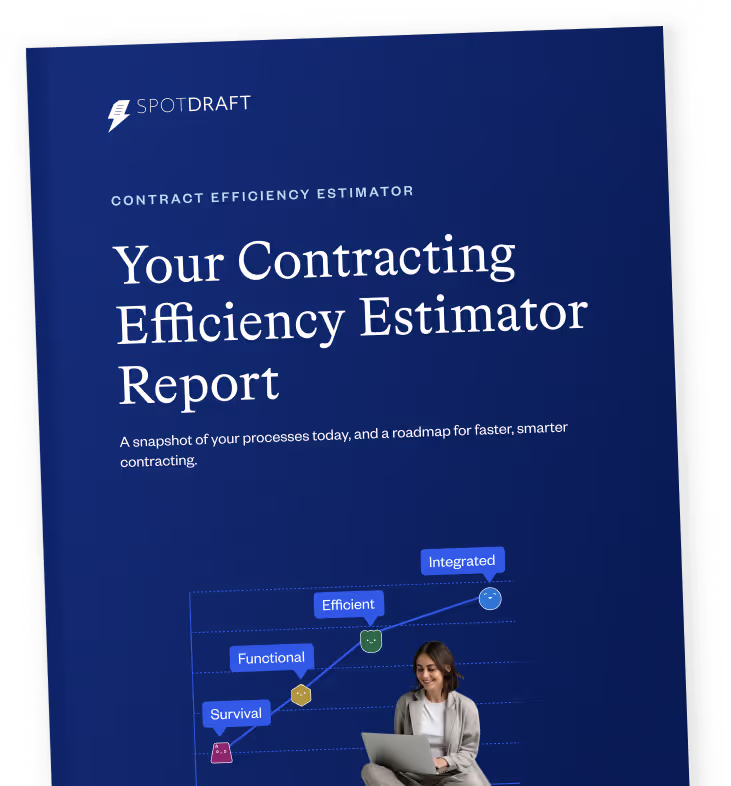Introduction
In 2026, contracts hold more operational data than most teams realize. They contain information about timelines, value, obligations, approvals, and risks. If that data sits in folders, inboxes, or spreadsheets, you lose visibility into how work moves and where delays occur. World Commerce and Contracting reports that organizations lose up to 9 percent of annual revenue due to missed obligations and poor visibility. When you rely on scattered information, you are forced to make decisions based on assumptions rather than insight.
Contract analysis gives you a way to extract structured data from your agreements so you can understand performance, forecast demand, and improve how work flows across your organization.
1. Measure What Matters Across Your Contract Lifecycle
Contract analysis allows you to track the lifecycle from creation to signature. Instead of compiling data manually, you can review trends across drafting, review, negotiation, and execution. You can see how many agreements were created in a given period, what types dominated a quarter, and how volume shifted across the year.
This visibility helps you replace guesswork with patterns. You can anticipate workload peaks and plan resources with confidence.
2. Spot Bottlenecks in Review and Approvals
One of the biggest causes of delays is slow approvals. When approvals happen through emails or scattered conversations, it becomes difficult to see where work is stuck.
By tracking stage-level turnaround times, you can identify whether delays are happening in legal, finance, commercial teams, or external parties. Deloitte’s Contract Management Lifecycle Insights notes that transparent approval metrics can improve deal velocity by up to 30 percent. When you know where time is being spent, you can shorten reviews, rebalance workloads, or establish clearer ownership.
3. Manage Workload and Prevent Burnout
Workload imbalance is easy to miss until you experience bottlenecks or fatigue. Contract analysis lets you break down review volume by owner or department so you can see who is overwhelmed and where support is needed.
Tracking how long each review takes and how many agreements are pending gives you the data to allocate work fairly. You can also show month-over-month improvements with data rather than anecdotal updates.
4. Treat Turnaround Time as a Strategic Metric
Turnaround time is one of the most powerful metrics in your contract process. When you track the journey from first draft to signature, you learn how long each stage takes and how many negotiation cycles are typical for different contract types.
EY’s Legal Function Reimagined report highlights that teams using stage-specific analytics reduce cycle times by up to 40 percent simply by identifying inefficiencies early. When you can see repeat slowdowns, you can refine playbooks, simplify templates, or establish thresholds for auto-approvals.
5. Show Legal’s Impact with Data
Legal teams often struggle to quantify impact. When you track cycle time, first-response time, completion rates, and approval delays, you can demonstrate how operational improvements drive business outcomes.
Quarterly reporting gives you a clear way to highlight reduced workload, faster approvals, and SLA consistency. This reframes legal from a reactive function to a proactive business partner.
6. Forecast Demand Before It Hits
Contract volume often spikes during renewals, quarter end, or new vendor launches. Contract analysis helps you spot these patterns so you can plan ahead rather than react under pressure. You can make hiring decisions, manage internal bandwidth, and prepare SLAs based on real data.
This shifts legal operations from reporting on past activity to predicting what is coming next.
Conclusion
Contract analysis gives you a clearer, more data driven way to run your legal function in 2026. When you track how contracts move through drafting, review, approval, and signature, you stop relying on assumptions and start working with facts. You can see where delays happen, how workloads shift, and which steps slow deals down. You can plan resources with confidence and prepare for spikes in demand rather than reacting at the last minute.
Most importantly, contract analytics helps you show the impact of legal. Faster cycle times, shorter approvals, consistent SLAs, and predictable outcomes demonstrate how legal contributes to business performance. Instead of being seen as a bottleneck, you position your team as a strategic partner that drives efficiency and supports growth.
When you treat contracts as a source of insight instead of static documents, you build a process that gets better every cycle. You improve visibility, reduce risk, and make decisions based on real data. That is how legal teams unlock business value in 2026.
FAQ
Q1. What is contract analysis and how does it help legal teams in 2026?
Contract analysis helps you extract data from your agreements so you can improve visibility, reduce risk, and make faster decisions. It turns contracts into an information source instead of static documents.
Q2. How do you measure the performance of your contract lifecycle?
You can track volume, contract type, cycle time, review duration, negotiation loops, and time to signature. These metrics help you see how work moves from draft to execution.
Q3. How can you identify bottlenecks in contract review and approvals?
You can monitor stage level turnaround times to see where delays happen. This makes it easier to pinpoint where work is stuck and which team or step needs attention.
Q4. Why is turnaround time a strategic metric for contract analytics?
Turnaround time shows how long each stage of the workflow takes. When you track this data, you can improve templates, simplify playbooks, and shorten approval cycles.
Q5. How can contract analytics help you balance workload across your team?
By tracking review volume and time per reviewer, you can see who is overloaded and where support is needed. This prevents bottlenecks and burnout.
Q6. How does contract data help you forecast future workloads?
Patterns like quarter end spikes or renewal surges let you prepare hiring plans, internal bandwidth, and SLAs based on real demand rather than assumptions.
Q7. How can you use contract data to demonstrate legal’s business impact?
You can report on faster cycle times, reduced approval delays, improved completion rates, and consistent SLAs. This shows how legal contributes to deal velocity and operational efficiency.
Q8. What metrics should you prioritize when doing contract analytics?
Cycle time, approval delays, contract value, renewal dates, ownership, and obligations. These metrics give you a clear picture of performance and risk.
Q9. How does AI support contract analysis in 2026?
AI can extract metadata, identify clauses, and flag risks so you spend less time on manual review and more time on strategic decisions.
Q10. What should you look for in contract analysis software?
AI extraction, clause search, reporting, obligation tracking, templates, and analytics that help you monitor every stage of the lifecycle.


.png)







